A Manhattan street artist sold this to a friend, who turned around and gave it to me for a Christmas present. I don’t like to wear anything brown (not even underwear or socks) but this is exceptional. Research hasn’t revealed what “Il Maco” means.

A Manhattan street artist sold this to a friend, who turned around and gave it to me for a Christmas present. I don’t like to wear anything brown (not even underwear or socks) but this is exceptional. Research hasn’t revealed what “Il Maco” means.

Jett, who tunes out on certain subjects every so often, just asked who the likely Best Supporting Actor winner will be, and when I said “Christoph Waltz, the milk-sipping Nazi Colonel from Inglourious Basterds,” he said “what?” He’s seen Quentin Tarantino‘s film and was okay with it, but the Waltz certainty shocked him. Write a fast piece about why you just said that, I suggested. He’s not responding so I guess not.
This was a banner year of Stephen Lang in Public Enemies and Avatar — why isn’t he in the loop? Peter Capaldi‘s potty mouthed rage-hound performance in In The Loop made him a major indie star. Alfred Molina‘s awkward English dad was wonderfully bent and vulnerable in An Education, and Peter Sarsgaard was curiously sly and winning as Carey Mulligan‘s odd-duck older boyfriend. Anthony Mackie and Brian Geraghty shone brightly in The Hurt Locker. Christian McKay in Orson Welles and Me! And James Gandolfini‘s In The Loop general turned me around like few smallish comic performances have this year. (Between this and Gandolfini’s comic vulgarian in God of Carnage, who knew?)
Why does it have to be Waltz, Waltz, Waltz and nothing but?
“While there is violence galore in Ian Fitzgibbon‘s A Film With Me in It, the lion’s share is accidental,” writes critic Marshall Fine. “That’s the joke in this blackly humorous Irish film. People drop dead at an alarming rate in this movie, and the deaths are unbelievably accidental — and are certain to seem so to the authorities.
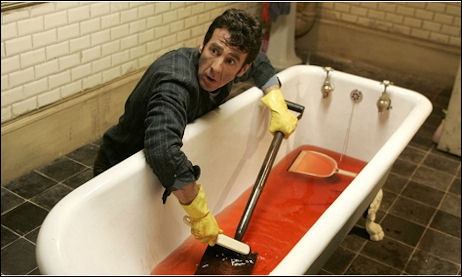
“Unemployed actor Mark (Mark Doherty) and his would-be writer-filmmaker friend Pierce (stand-up comic Dylan Moran) are ne’er-do-wells, renting flats in the same building from the same gruff landlord (Keith Allen), who is badgering them for their respective rents. Mark has spent the rent on other bills – like heat for the flat and gas for the car – but he hasn’t told his girlfriend Sally (Amy Huberman), with whom he lives, along with his paralyzed brother Dave (David O’Doherty).
“As Mark tries to figure out how to keep from being evicted, he suffers a mini-plague of accidents within his ramshackle apartment. Let’s just say the apartment’s rattletrap fixtures and shaky furniture claim a series of victims in record time, forcing Mark and Pierce to figure out how to dispose of the various corpses without landing in jail for something they didn’t do.
“There’s a wonderful comic chemistry between the taciturn Doherty and the alternately blase and panicked Moran. Doherty seems mostly to be in shock, while Moran – as the would-be screenwriter – keeps trying to puzzle out the situation as though it were a movie he was watching.
“It’s a slight film but an explosively funny one. I happened to see it at the Toronto Film Festival in 2008 — and now it’s finally being released (who knows how briefly) at lower Manhattan’s IFC Center. It may roll out elsewhere – or turn up in some video-on-demand delivery system. By all means, make an effort to track it down. It will make you laugh – hard.”
Why don’t I believe Fine’s last sentence? If A Film With Me in It is that funny then why wasn’t it acquired for a bigger, broader release out of Toronto? And why didn’t the IFC people invite me to see it?
Orangutans have very expressive faces. Nothing startling in this. I first realized it when I was in third or fourth grade. I thought that Clyde, the orangutan who co-stared with Clint Eastwood in Every Which Way But Loose and Any Which Way You Can , performed well, but I’d like to see someone try to direct an orangutan into a straight drama. “Without a dream in my heart, without a love of my own…”


With Nine not doing as well as it could and Harvey Weinstein feeling the financial pressure even more, I’ve no desire to add to anyone’s grief. But from a sporting perspective I’m wondering if anyone besides myself is perturbed in the slightest that Mo’Nique and Christoph Waltz, portrayers of a gruesome twosome in Precious and Inglourious Basterds respectively, have been so relentlessly predicted to win Best Suppporting Oscars?
Because so many pundits and critics groups have predicted both to win, I would love to see one or both apple carts overturned. Just for the pleasure of seeing certain people shout “no!…no!”.
A Mo’Nique loss would be especially glorious, but the odds are almost insurmountable. And no one seems persuaded that her competitors are formidable enough. I’m actually of two minds about Waltz. He’s apparently a nice fellow and was, admittedly, enjoyably cunning in that first IB scene in the farmhouse and, as mentioned, I feel badly enough for Harvey as it is. It’s only that something in me seethes when the same thing is forecast by so many, especially when the performances in question aren’t, to be honest, especially rich or startling or unique, but because they’re showboaters — they arrest your attention and stay with you.
The Gold Derby Buzzmeter has been updated and Avatar got a big bump. It’s still trailing Up in the Air, but only by a couple votes. Invictus is seen as a Best Picture hopeful?
The trailer for James Mangold‘s Knight and Day (20th Century Fox, 7.2.10) suggests it may be the only formulaic throw-away movie of Tom Cruise‘s career.
Which isn’t to suggest that it is that. Trailer always accentuate the most stupidly appealing aspects of any film, etc. It’s just that Cruise — think about it — has one of the best track records of all time in terms of almost making quality-level, or at least quality-aspriring, films. (What’s his all-time worst? Far and Away? Days of Thunder? Cocktail?) And he’s been maintaining this brand for 30 years now. He’s never really made a 1980s Chevy Chase movie in his entire life.
When all is said and done I suspect that Knight and Day may turn out to be a tad more substantial than this. Fletch meets Collateral?
I mean, you look at Cameron Diaz‘s behavior and expressions in the trailer and you go, “What is this? How could the esteemed director of Walk The Line, 3:10 to Yuma and Copland have made such a thing?”
I haven’t read the script, but the idea, I’m figuring, was to deliberately go light and zingy and commercial in order to make money. If this happens, Cruise will have begun to disperse that uh-oh cloud he’s been carrying over his head since the couch-jump.
In all modesty, I would like to believe that my 2009 war against the Blu-ray grain monks may have been…well, at least a significant anecdotal factor in the evolution of industry thinking about how to wisely master Blu-rays of classic films. I ranted about this over and over, but the best-written column article on the subject, called “Damn Sand,” ran on 2.28.09. I am genuinely proud of how I put the case.
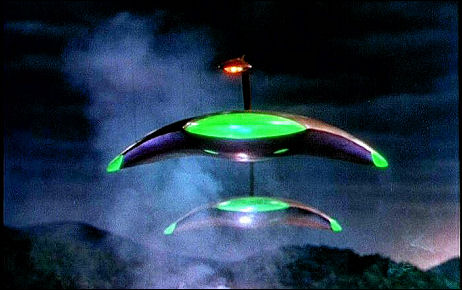
And here it is again, the second 2009 looking-back post for the purpose of filling column inches as everyone kicks back and does nothing until January 2, 2010:
Sandstorm-strength grain is a technological blight that classic-era filmmakers had no choice but to work with as best they could. Bring the great directors back to life — Wilder, Lubitsch, Fleming, Capra, Hawks, Ford, Griffith, Keaton, Hitchcock — and they would all say, “Yes, naturally, obviously, of course…ask Lowry Digital‘s John Lowry to do what he can to tastefully take down the grain levels in our films! Because we want our films to be seen, and we never liked that damn grain gravel to begin with.”
Take no notice of the present-day monks who say that grain is beautiful, vital, essential. Excessive grain is a visual hindrance to be fought tooth-and-nail down to the last dying breath. Because if they have their way the grain monks, who care only about the perpetration of their own dweeby world in the Abbey of St. Martin in rural France, will strongly discourage today’s younger generations of film lovers (as well as generations to come) from even thinking about watching the great classics.
I suspect that younger film lovers are as averse to Arabian grainstorm images as I’ve been all my life to silent films. I’m ashamed to admit that I’m always putting off watching this or that great silent classic on DVD because of a lifelong impatience with lack of dialogue (among other tinny ’20s elements that tend to get in the way for a TV generation guy like myself, such as the exaggerated acting styles and too-often static cinematography). I watch these films but grudgingly. I’m not proud of this, mind, but it’s a fact. And I’m probably more receptive to movie lore than your average non-pro film buff.
The younger folks of today (i.e., 25 and under) regard movies made before the ’90s as old, and films from the big-studio era as Paleozoic. Silent films are almost totally out the window for my two sons (who are 20 and 19), but to foster at least some degree of reverence and affection for the 1930-to-1970 era, the old films have to be semi-watchable in a cleaned-up way, and by this I mean aesthetically free of any rickety aroma.
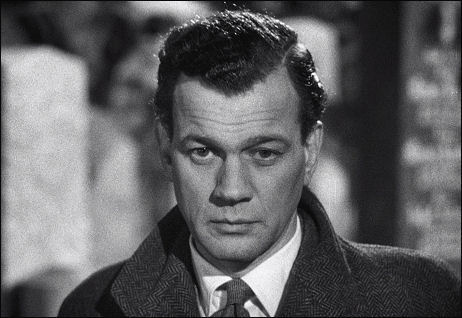
That doesn’t mean they should be degraded down to a plastic visual realm akin to digital video games, as some irrational monks on this site have suggested. It means de-graining them with respect, taste and affection. But it also means removing the damn sand already, or as much as possible without violating the core intentions of the filmmakers.
These guys didn’t love grain. Their films were covered with the stuff — hello? – because they had no choice.
Grain reduction can be done correctly, reverently. Look at the Blu-ray Pinocchio (which Some Came Running’s Glenn Kenny has just written about), or the Blu-ray Casablanca. (I’ve never seen the Blu-ray of Michael Curtiz‘s Robin Hood — how is it?)
And that means one thing — elevating John Lowry and his grain-reduction technology to a position equal to that of Jonas Salk and his 1950s polio vaccine.
But before this happens there can be no more tolerance of the monk aesthetic. These people are equivalent to the ultra-right-wing Hebrew rabbinicals who’ve been the most persistent opponents of accord with the Palestinians. Due respect, but people on my side of the issue need to get all Torquemada on their ass. The more the monks get to call the shots about transferring old films to high-def formats, the worse things will be as far as the future of film culture will be. Because they are standing in the way of the church taking in new members and making new converts.
The very survival of the culture of classic film lovers over the next ten to twenty years and beyond is at stake. These well-meaning purists are doing everything in their power to preserve the celluloid grain reality of the past (okay, for the “right” reasons, granted) but are, I suspect, dimming enthusiasm among GenY and GenD viewers for pre-1970 Hollywood classics in the bargain.
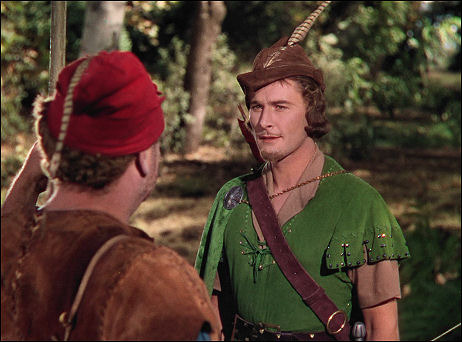
This issue has only come to the fore with Blu-ray technology because now you can see the grain much more clearly. I popped in an eight-year-old Dr. Strangelove DVD the other day and was shocked at how much grainier it looks on my 42-inch Panasonic plasma than on my six year-old 36″ Sony analog flat-screen.
High-def, in short, is exposing the granular reality of how these films look more than ever before. In the same way that the most recent digital mastering of George Pal‘s War of the Worlds (’53) exposed the wires holding up the Martian space ships. Only an oddball like DVD Talk‘s Glenn Erickson would say that seeing the wires is an okay thing. (“There was no CG wire removal in 1953,” Erickson wrote in ’05, “and it would be detrimental revisionism to change the picture now [so] learn to live with it.”) The wires obviously weren’t intended to be seen, and the obvious remedy is to go into the current transfer and digitally remove them — simple. That’s all I’m talking about in general. Remove the stuff from older films that distracts the viewer from the dream state that movies are supposed to lull you into. Because grain is the worst waker-upper of all.
In a figurative way the monks already have already been excommunicated or I wouldn’t be referring to them as monks, but they clearly hold sway among the current generation of film preservationists and restoration experts (Robert Harris, Grover Crisp, Ned Price, George Feltenstein, Scott McQueen, etc.) and at the Criterion Co., which is pretty much mad monk central these days, to go by their work on the Blu-ray of The Third Man.
Since I have little else to write about in these late December doldrums, I’m going to re-run some of HE’s 2009 highlights over the next couple of days. And one piece I’m especially proud of is the slapdown I gave to director William Friedkin and his “high-contrasty, snow-grained, color-bleeding, verging-on-monochrome” Blu-ray of The French Connection that came out last February.
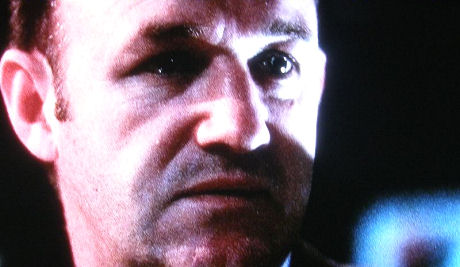
This Blu-ray disc was, no exaggeration, the most offensive act of corporately-sanctioned vandalism to happen to a classic film in motion-picture history, and I’m thinking it can’t hurt to give Friedkin another couple of lashes for completion’s sake, just to put the cap on and to make double sure no one ever tries something like this again.
Jeffrey Wells to William Friedkin: The French Connection was obviously your film when you were developing, shooting and cutting it, and certainly your film when you were promoting it in ’71. And you were most responsible for winning the Best Picture Oscar, clearly. But those days are over, pal, and while you may feel some form of residual parental ownership rights today, you’re out of line. At least as far as revisionist futzing rights are concerned.
Whatever your attorney has told you or the contracts may say, you do not own The French Connection, Mr. Freidkin — the moviegoing public does. The fans who’ve been watching and worshipping this film for the last 38 years do. Your ownership rights went out the window, sir, once that legendary New York crime film became a huge hit, and they sure as shit were null and void after it won the Best Picture Oscar of 1971. And you can’t just stroll into a post-production house on Highland or Seward and re-visualize it and put out a snow-bleachy version on Blu-ray and say, “This is it — the best version of this film ever made!”
Well, you can because you have. But you have no legitimacy in doing so.
I’m referring to what cinematographer Owen Roizman strongly stated last week, which is that you’ve desecrated The French Connection with this new Blu-ray version.

The word on the street is that you intend to do the same thing to The Exorcist down the road. I got the idea from listening to you speak the night before last that if you had a chance you’d probably do the same to upcoming remasters of Sorcerer and To Live and Die in L.A..
I’m writing to tell you, sir, that this has to stop because in the eyes of the Movie Gods you haven’t the right to do this, despite what your pallies at Fox Home Video and others in the film-cultivating community may have told you.
You can’t mangle what belongs to the public and to history, Mr. Friedkin. Art belongs to the artist until he or she creates it, and then it belongs to the world. Period. That means forever. That means no retroactive whimsical messing-around rights can kick in. And that means no Greedo-shoots-first revisionism of any kind unless the intention is to try and bring genuine (i.e., nonrevisionist) improvement to the original vision. Richer, fuller, crisper, cleaner…fine. But no “atrocious” and “horrifying” revisions.
That means if Pablo Picasso comes back from the grave he can’t go to Spain and decide that “Guernica” works better in color because he had a recent vision in heaven that painting it in black and white in 1937 was the wrong way to go. That means that the ghost of David Lean can’t come back to earth and decide to reimagine and remaster Lawrence of Arabia as a black-and-white period movie in the vein of John Ford‘s The Lost Patrol (1934).
The same thing goes for The Exorcist, Sorcerer and To Live and Die in LA.. You don’t have the right because they’re not your films, buster. You made them, obviously, but they have a life and a culture and a spirit of their own now. And I am telling you, speaking for myself and I suspect for many others, to back off and leave those movies alone. I mean it. Stand aside, sheath your sword, holster your pistol and find some other way to be creative.
You can do what you can to improve the appearance of these films on DVD, Blu-ray and hi-def digital downloads feeds. You can help to make sure they look precisely as they did when they were shown as brand-new prints in first-run theatres, or help make them look even sharper and cleaner and more vivid than they did back then if you so choose, but that’s all.
Otherwise you’re a brilliant and accomplished filmmaker, and an excellent fellow to discuss the ins and outs of the movie business with. And Bug deserved more attention and acclaim than it got. And all hail Michael Shannon!
MCN’s Michael Wilmington has assembled a somewhat lengthy but well-chosen list of 2009 DVDs that he considers the year’s 21 best — most of which I agree with. Wings of Desire, Z, Do The Right Thing, North by Northwest, The Man Who Shot Liberty Valance, The Wizard of Oz…the usual-usuals.
But surely a key value in determining “best” in this context alludes to high-end appearance. Wilmington should be talking about best looking, best mastered, best restored, etc. But he barely mentions this, focusing instead on the lasting long-view film-bum value of the movies themselves. Which you can get from any greatest-flicks-of-all-time book written by anyone.
And why is Wilmington focusing on DVDs in the first place? Isn’t this a little like writing a piece in 1999 about the best VHS tapes of the year? A sophisticated uptown film hound like Wilmington should be on the Blu-ray beat, period. Has the DVD audience not primarily become dishevelled middle-market and downmarket types who wander about Walmart and Target and Giant stores on Sunday afternoons?
“If we can’t catch a Nigerian with a powerful explosive powder in his oddly feminine-looking underpants and a syringe full of acid, a man whose own father had alerted the U.S. Embassy in Nigeria, a traveler whose ticket was paid for in cash and who didn’t check bags, whose visa renewal had been denied by the British, who had studied Arabic in Al Qaeda sanctuary Yemen, and whose name was on a counterterrorism watch list — who can we catch?” — from a 12.29 Maureen Dowd column in the N.Y. Times.
Indeed — you’d think that someone in airline security.that day would have put two and two together and stopped Umar Farouk Abdulmutallab from boarding. But as the security system has an apparent “systemic” weakness or two, doing so would have required a security employee to apply intelligent analysis and individual assessment on his or her own, and also to step up to the plate and say to his/her superior, “Uhm, there’s this guy we might want to take a second look at.” But what do all companies and organizations instruct their employees to do above all else? Get along, follow the form, support the team.